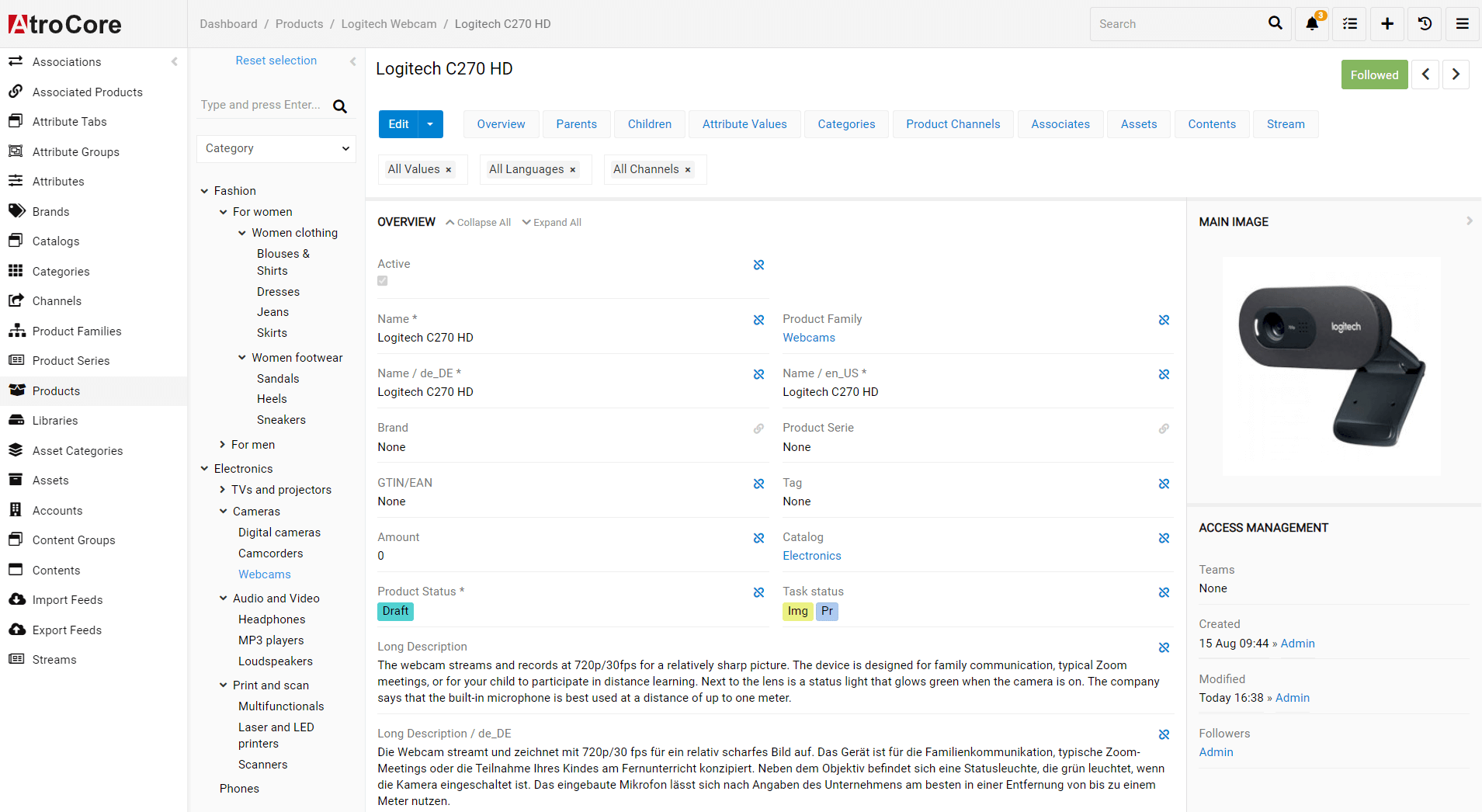Features
As a most advanced open-source PIM system AtroPIM offers a lot of features in a base version, which is totally free.
AtroPIM is feature-rich and helps you to organize efficient teamwork to prepare your product information by simplifying and automating many processes. The quality of your product data is thus increased and the associated costs reduced. AtroPIM is simple, intuitively understandable and user-friendly.

Features Overview
Model your data by configuring entities, fields, attributes and relations, adapt the UIs to the configured data model. You can manage any data you want.
AtroPIM is web-based and has responsive user interfaces, so you can work on any device – desktop, tablet, smartphone. A web browser is all you need.
Quickly import data (incl. direct relationships) from different sources in any form by using 100% configurable import feeds.
Use the most advanced access control – you can configure permissions and access levels for any entity on the system, even at field level.
Standardize and structure your product data in any way you want – using product families, catalogs, categories, channels and product hierarchies.
Manage any product-related HTML content – landing pages, press releases, additional descriptions, etc.
Increase the quality, accuracy and consistency of your product data thanks to validations, data completeness checking and approvals.
Set up and use channel-specific product attributes and optimize their values for different channels.
Use advanced data filtering and search functions and save your queries or use full-text search for more complicated search scenarios.
Set product associations, such as upsell, cross-sell, and much more to boost your e-commerce revenue or store product dependencies like spare parts.
Use multi-level hierarchies and data inheritance to save time and minimize mistakes – attributes can be inherited from product families. Variants inherit data from parent products.
Make bulk data changes to improve efficiency and productivity and reduce manual work.
Keep track of changes by using logging functionality – you can review all the changes and restore the old values if you wish.
Benefit from the use of the fully-fledged Digital Asset Management System AtroCore to manage all of your digital assets.
Facilitate cross-departmental collaboration and reduce inefficiencies by centralizing your product information, using workflows and tasks.
Use portals to onboard your suppliers, distributors, retailers and other partners – offer them self-service directly on your system.
Quickly export all the data for internal purposes or channel-specific data for different channels, in any form.
Use Associated Attributes, which are automatically linked to a product after the main attribute is linked to create better and more detailed product descriptions.
Want a new feature?
You can order a new feature just by partly financing the development.
Over 50% of new features are sponsored by our customers and the community.
You will be pleasantly surprised by our prices!


